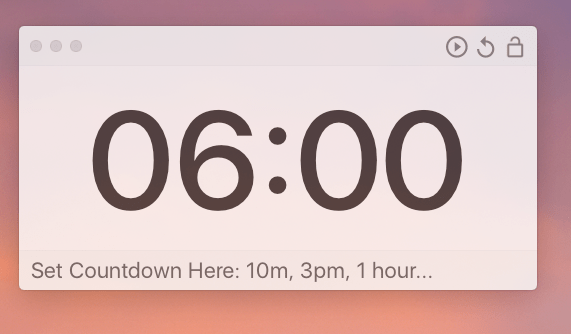Introduction
I recently attended the online seminar, Financial Planning Demonstration, which was presented by the NY Public Library, Thomas Yoseloff Business Center.
The webinar covered a lot of great information and much of what I jotted down seemed quick and easy to remember. I thought it was really helpful, so hopefully others will learn something.
Here’s what I have to share:
- Overview: A bit about the presentation and the speaker
- Presentation Notes: Presented in Q&A style
- Final Takeaways: The speaker’s wrap-up and final thoughts
Then I’ll share a few of my own concluding thoughts and where to find more events.
I. Overview
Event Name
Financial Planning Demonstration (Eventbrite)
Webinar Description
You have probably heard about “Financial Planning”, but do you know exactly what is involved in the process? Learn how the financial planning process can be used to quantify your resources and how you can then best use those resources to reach your financial goals.If you have been curious about what, exactly, a financial plan is and how it can be used to navigate turbulent markets, then, this is a webinar you will not want to miss.
Presenter
Charles Failla, CFP®
Chuck understands the importance of working as a Fiduciary and uses those standards to oversee the financial planning and investment management work done at Sovereign Financial. As a Board Certified Financial Planning™ practitioner, Chuck understands that shepherding a client’s financial and retirement plan requires more than simply “picking investments”. In addition to working with clients, Chuck is a regular speaker and commentator on financial topics and has been featured in Forbes, The New York Daily News, Reuters, CBS Market Watch and numerous other media outlets. Chuck is also committed to the financial planning community and advancing the cause of financial literacy. To that end, he currently serves on the Board of Directors for the Financial Planning Association of Connecticut as the Chairperson of their Pro Bono / Public Outreach Committee.
II. Q & A Notes
What is financial planning?
Determining how much money is needed, and when it is needed.
Why do financial planning?
2 reasons:
- Avoid Sequence of Return risk
- Helps you optimize investments conservatively vs aggressively
What is Sequence of Return?
This impacts people in retirement, but not people while they’re saving in retirement.
Sequence risk is the danger that the timing of withdrawals from a retirement account will have a negative impact on the overall rate of return available to the investor. This can have a significant impact on a retiree who depends on the income from a lifetime of investing and is no longer contributing new capital that could offset losses. Sequence risk is also called sequence-of-returns risk.
Investopedia, Sequence Risk, Nov 2020: https://www.investopedia.com/terms/s/sequence-risk.asp
The short answer is running out of money in retirement. Apparently, a lot of people have never heard of this before. (I understood the concept, but this was my first time hearing this term and the first time it had been demonstrated so clearly.)
What is Long-Term Care Insurance?
A long-term care insurance policy helps cover the costs of that care when you have a chronic medical condition, a disability or a disorder such as Alzheimer’s disease.
NerdWallet, Long-Term Care Insurance Explained, May 2019, https://www.nerdwallet.com/blog/insurance/long-term-care-insurance/
Doesn’t recommend for someone who is: a.) Very wealthy or b.) Already pretty sick.
How do I optimize my investments?

Split money into buckets, based on when you need it. For instance, think of how much money will you need in:
- 1-5 years
- 5-10 years
- 10+ years
This gives more control and helps protect money from risk.
When should you rebalance a portfolio?
- It could be on a regular schedule: quarterly, annually, etc.
- Setting and forgetting is a mistake!
How do you use buckets to protect your portfolio from sequence risk?
You want money you will need in 1-5 years to be the most secure. Money that’s needed 10+ can be treated more aggressively. Aggressive portfolios will always provide the most returns, but they also have the greatest risk.
Here’s a breakdown of how to think about the buckets in relation to portfolio types, based on when you need the money:
- Conservative portfolio: 1-5 years
- Moderate portfolio: 5-10 years
- Aggressive portfolio: 10+ years
Ex: Money that’s needed in 1-5 years would be in the conservative portfolio. It won’t grow as much, but it won’t lose as much. Money that’s not needed until 10 years from now can be put in the aggressive portfolio.
What’s a good site to find a planner?
plannersearch.org
If I’m looking for a financial planner, what should I look for?
- Talk to 2-3 advisors
- Get to know their fees
- Know their bias
Bias: A good planner will sign a fiduciary agreement, meaning they are required to treat your money as their own. If you work with a bank, which tries to sign you up with one of their products, they might have bias and not be willing to sign this agreement.
What does “cash” mean on a portfolio statement?
Generally cash is saved/safe. It’s in that conservative bucket. Rate of return is lower. Could be in a CD, a structured CD, money market, etc.
Is there a difference between money management and financial planning? Could the same person do both?
The answer to both is Yes! A financial planner helps create the structure. A money manager directs the money, helps select the products, etc.
It’s possible to find someone who’s able to do both, which could be cheaper than getting 2 people. Often it’s the money manager who does not do financial planning, vs the other way around.
III. Final Takeaways

Small Tweaks → Big Changes
Small tweaks to your plans could lead to big changes. These changes could be, for instance:
- Choosing to retire later: Instead of 60, retire at 64
- Downsizing: Selling a large house for something smaller can lead to more money available to reinvest
- Living on less money: Reducing the amount of money you expect to need per year; instead of $130,000, go to $100,000
Other Planning Tips
Selecting a Planner: You don’t need to know everything before choosing a financial planner. But, when they’re explaining things, you should feel comfortable that you know everything. Know enough, to know what to ask.
Bias: Make sure you find a CFP who will sign a fiduciary agreement. The worst stories come from people whose planner had bias.
Buckets: Use the buckets to protect money in the future. People who start off with the exact same amount of money in retirement can run it down too soon, if their money isn’t protect from unexpected losses.
Rebalancing: Setting and forgetting your portfolio is a mistake because markets change. If you don’t adjust, or rebalance, your portfolio from time to time, changes in the market could mean not protecting your investments or missing opportunities to get good stocks at low prices.
Conclusion
So, those are all of the notes I had to share! Hope they were helpful.
To recap: I shared an event overview, my Q&A notes of the presentation, and the speaker’s final wrap-up comments.
My thoughts: As I mentioned at the beginning, I thought it was a very informative webinar. For instance, I hadn’t heard of long-term care insurance, so that was good to know.
Additional events: There are more webinars related to money management and finance on the NYPL website. You can also subscribe to their email list, and they’ll send announcements of upcoming webinars or other resources.




